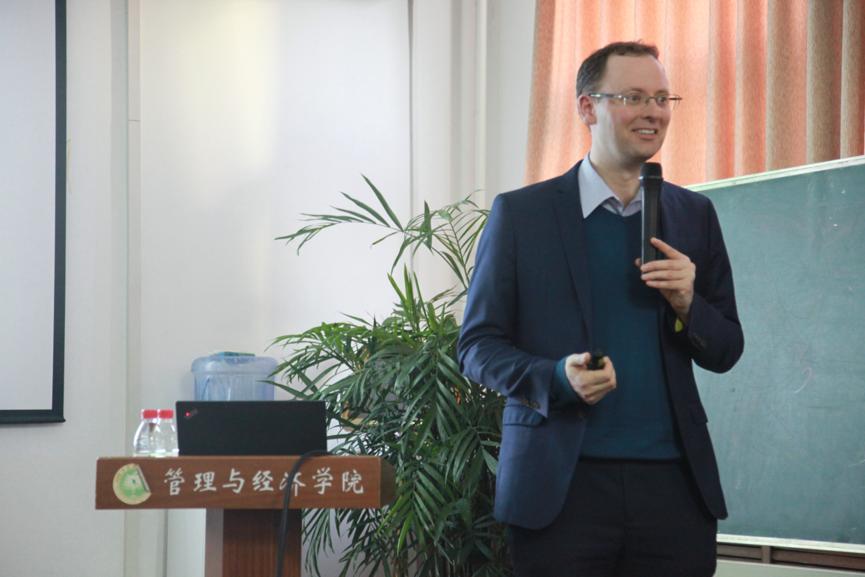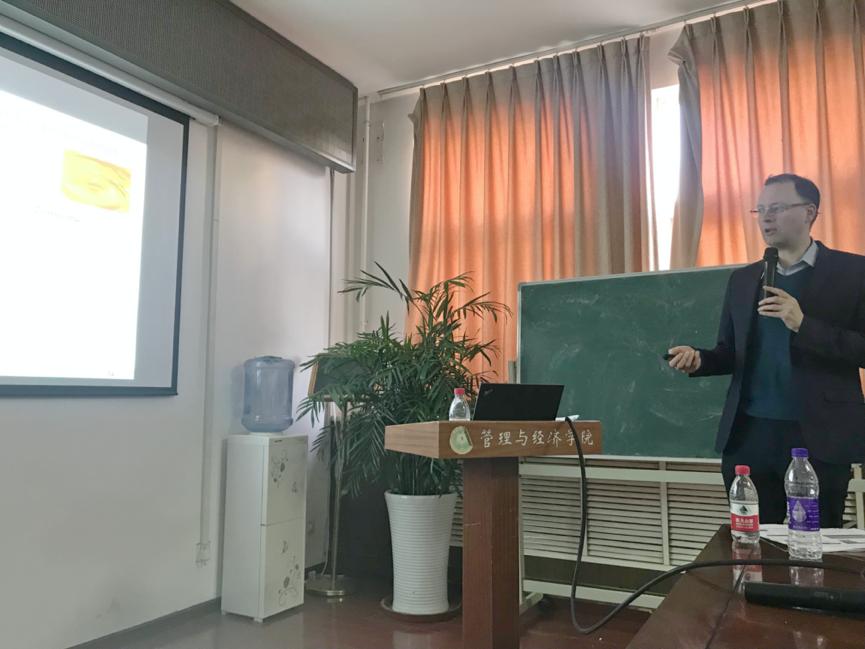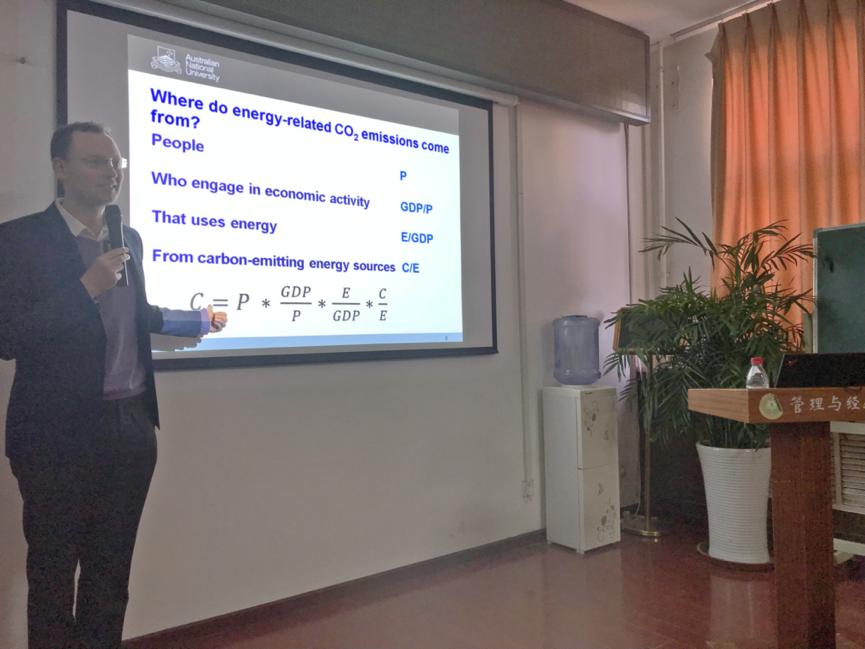
Recently, Associate Professor Paul Burke of the Australian National University was invited to visit the School of Management and Economics and the Center for Energy and Environmental Policy Research to give a series of lectures to the graduate students on the frontier issues of energy and environmental policy research. Lecture topics included: (1)The environment and the economy;(2)Environmental Kuznets curve;(3)Energy policies in resource-rich developing countries;(4)Carbon pricing efficacy: Cross-country evidence;(5)Market-based instruments to improve the environment. Postgraduate freshmen, postdocs, and some teachers of the School of Management and Economics participated in the lectures.
Paul Burke is an associate professor of economics at the Crawford School of Public Policy at the Australian National University.
He has been working on energy economy, environmental economy, and transportation economy related issues for many years. In recent years, he has focused on the zero-carbon energy policy in the Asia-Pacific region, Japan's pollution policy, carbon tax and carbon market, and has published relevant academic papers in many internationally renowned journals.


In the first topic of the lecture, Associate Professor Paul Burke first introduced the development of the global economy, emphasizing that the global GDP has shown an exponential growth since the industrial revolution, and people's living standards and life expectancy have also increased significantly. Then he introduced the significant impact of this rapid economic growth on atmospheric greenhouse gas content and global climate, the calculation formula for carbon emissions, and introduced several key measures for emission reduction. In the second topic, he first introduced the possible inverse U-shaped curve relationship between economic development and the environment through the concept and connotation of the Environmental Kuznets curve, that is, when a country’s economic development level is low, the degree of environmental degradation increases with the economic growth; when the economic development reaches a certain level, with further increase of per capita income, the environmental quality is gradually improved. Later, he further discussed the causes behind the Environmental Kuznets curve. In the third topic, he introduced the possible impacts of rich energy resources on regions through some examples of resource rich countries, and shared his views on how to reasonably use resource income from the perspective of energy policy. In the fourth topic, he mainly introduced the carbon tax and carbon market, the two main carbon emission pricing systems, and through the implementation effect of relevant countries and the measurement research he has carried out, compared and analyzed the advantages and disadvantages of the two carbon pricing systems. In the fifth topic, he introduced how to adopt market means to improve environmental issues, emphasizing the role of price mechanism to guide relevant enterprises to actively respond to and deal with environmental issues, including collecting emissions taxes and launching carbon trading markets.


Associate Professor Paul Burke paid great attention to communication and discussion with the teachers and students during the lectures. The speeches were vivid, interesting and infectious, and received compliments from the participants. After the last lecture, he took a group photo with the participants.
